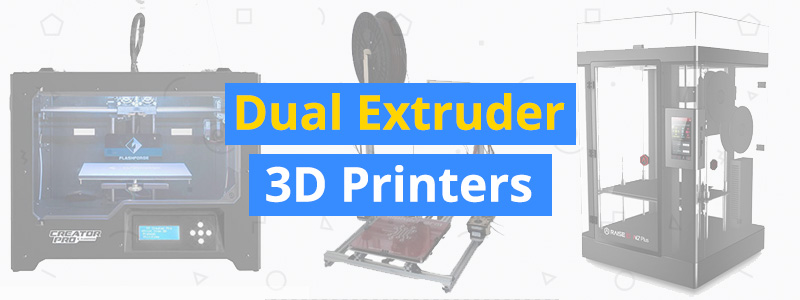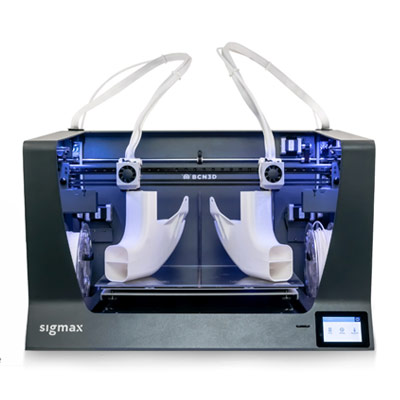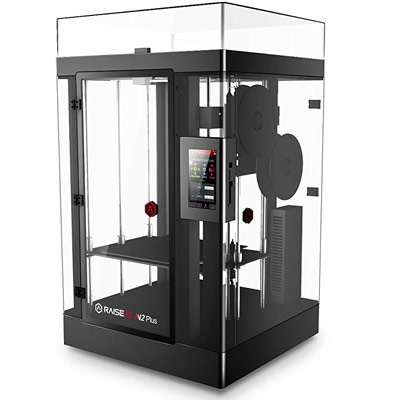Best Dual Extruder 3D Printers
With dual extruder 3D printers, you get to print with two colors and create complex objects that need support materials. But it’s not that simple. Not all dual extruders on the market are up to the task. Some require a frustrating amount of tinkering while others simply don’t work no matter how many adjustments you make.
| Budget |
|---|
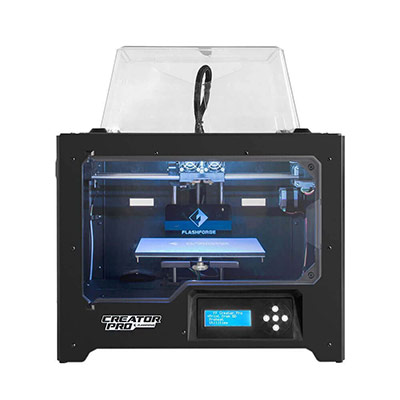 |
| FlashForge Creator Pro |
| 4.4/5.0 |
| 37.5 lb |
| USB, SD card |
| Fully enclosed with removable covers and decent print speed. |
| Check Amazon |
| Best Value |
|---|
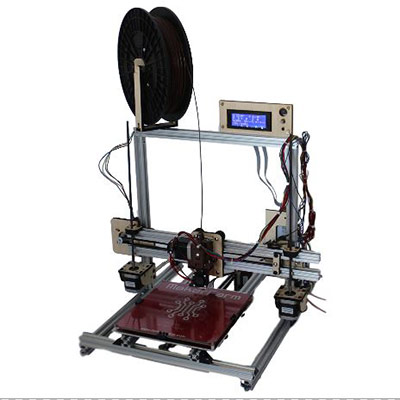 |
| Maker Farm Pegasus |
| 4.5/5.0 |
| 30 lb |
| USB, SD card |
| Fast print speed, low noise level, and highly upgradeable. |
| Check Amazon |
| Top Pick |
|---|
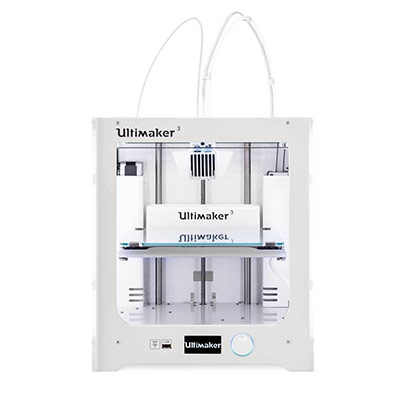 |
| Ultimaker 3 |
| 4.7/5.0 |
| 23.4 lb |
| Wi-Fi, USB |
| Integrated camera and includes wireless connectivity. |
| Check Amazon |
In this guide, we introduce you to the best dual extruder 3D printers. These are the products that will give you good results and less headaches. These are the products that will make you forget all about single extruder 3D printers. These are the products that send the message that dual extruder 3D printers can be extremely fun and easy to use too.
There’s a product for everyone here. Our guide consists of a pair of high-end 3D printers, a couple of relatively affordable options – one of which comes in a DIY kit – and a massive, Kickstarter-backed 3D printer that, sadly, also comes with a hefty price tag.
Just so you know exactly what to expect, our recommended “budget” pick here goes for $900. So definitely don’t expect to see one of those cheap 3D printers that you can buy for less than $500. (If that’s actually your budget, then stop reading and just head straight for the XYZprinting da Vinci 2.0 Duo.)
Best Dual Extruder 3D Printers Comparison Table
| Make and Model | Weight | Connectivity | Price |
|---|---|---|---|
| Ultimaker 3 | 23.4 lb | Wi-Fi, USB | Check Price |
| FlashForge Creator Pro | 37.5 lb | USB, SD card | Check Price |
| Maker Farm Pegasus | 30 lb | USB, SD card | Check Price |
| BCN3D Sigma | 33.1 lb | USB, SD card | Check Price |
| Raise3D N2 | 116.8 lb | Wi-Fi, USB, SD card | Check Price |
1. Ultimaker 3
Editor’s Rating: 4.7/5
Sometimes the best 3D printers don’t come with a wealth of fancy features that can make tech enthusiasts drool. Take the Ultimaker 3, for example. It’s not the largest in terms of build volume nor the most blessed with attention-grabbing features. But when it comes to print quality and reliability, there aren’t many dual extruder 3D printers that come close to it.
The Ultimaker 3 has the same rigid construction its predecessor, the Ultimaker 2, is known for. It’s housed in a semi-enclosed frame built to endure hundreds of hours of printing. It arrives mostly assembled and requires only 30 minutes to one hour for the initial setup. Even if you don’t have prior experience with 3D printers, the Ultimaker 3’s initial setup shouldn’t be too difficult for you.
For connectivity, the Ultimaker 3 comes with a USB port and a Wi-Fi option. The latter allows you to send print jobs over the network. Coupled with the integrated camera, the Wi-Fi connection also makes it possible to monitor your print progress from a distance. For standalone printing, you can use a USB stick and start a print job using the knob-operated interface right next to the USB port.
The Ultimaker 3 is a dream come true for those who value print quality above anything else. It’s capable of producing exceptional results other 3D printers in the same class can’t hope to match without a heavy dose of modifications. Even in low settings, the print quality is still good. The Ultimaker 3’s outstanding print quality is the chief reason it’s on top here.
The dual extruder mode works as advertised. It can handle multi-color printing and support materials like a champ and does not need a dizzying amount of tinkering on your part. Combined with the Ultimaker 3’s large build volume and ability to print with different materials, the dual extruder mode allows you to experiment with more complex 3D models.
The Ultimaker 3, however, has one significant flaw that may cause you to consider other options: It’s noticeably slower than other 3D printers in the same class, especially while in dual extruder mode. It’s not unbearably slow, but expect print jobs to take longer than usual to finish. Even small, low-resolution 3D models can take a while to complete in single extruder mode.
In addition to that, the Ultimaker 3 is not fully enclosed, so you need to build your own door if you plan to print with ABS and other materials that need consistent temperature. It’s not really a major issue compared to the print speed issue. But considering the amount of money in play, we can’t blame you if you feel outraged the Ultimaker 3 lacks an acrylic door right out of the box.
Like all other 3D printers, the Ultimaker 3 is not without flaws. However, all the good it brings to the table far outweighs the bad. If you want the best dual extruder 3D printer out on the market, look no further than the Ultimaker 3. It’s easy to use, reliable, and has outstanding print quality. Its got a large community as well, so it’s easy to find optimization tips and solutions to problems you might face down the line.
If you want to go big, literally, you can go for the Ultimaker 3 Extended, which is exactly what its name suggests: a larger version of the Ultimaker 3. But if you want that one, be ready to rip your wallet to shreds because it’s nearly $1,000 more expensive.
| Tech Specs |
|---|
| Resolution: 20 microns |
| Volume: 8.5 x 8.5 x 7.9 in |
| Filament: 2.85 mm |
| Type: ABS, PLA, PETG, and others |
| Weight: 23.4 lb |
| Connect: Wi-Fi, USB |
| The Pros |
|---|
| Easy to set up |
| Sturdy frame |
| Outstanding print quality |
| Large build volume |
| Open source |
| Includes wireless connectivity |
| Integrated camera |
| Good customer support |
| Large community |
| The Cons |
|---|
| Slow print speed |
| Not fully enclosed |
| Expensive |
2. FlashForge Creator Pro
Editor’s Rating: 4.4/5
If you really want a low-cost dual extruder 3D printer, check out the XYZprinting da Vinci 2.0 Duo, which is available for less than $500 (as mentioned above). But if you don’t want to deal with the limitations and issues often associated with cheap 3D printers, we suggest you up your budget and go for the FlashForge Creator Pro instead.
Retailing for under $1,000, the Creator Pro is a fully enclosed 3D printer. The sturdy frame is made of metal, with a pair of removable acrylic covers (front and top). Out front, the Creator Pro includes a user-friendly LCD interface operated by a set of buttons. It’s not really the most unique in design – the market is full of similar-looking 3D printers such as the BIBO2 and the Qidi Tech I.
Like the Ultimaker 3, the Creator Pro arrives mostly assembled out of the box, with only a few parts that need to be installed before you can start printing. The included instruction manual is pretty straightforward, though it could have been more detailed and less confusing in several areas. In all, the initial setup should probably take about 2-3 hours. If you already know your way around 3D printers, especially on the software side, you can go from unboxing to printing in just one hour.
The Creator Pro is a tinkerer’s machine, so it might not be suitable for beginners. It needs a fair amount of tinkering before it can produce excellent results. It’s not a plug-and-play 3D printer that can produce acceptable results even with the default settings. On the bright side, the Creator Pro has a relatively large community full of tinkerers and hobbyists, so it shouldn’t be too hard to find optimization guides on the internet.
Once fully optimized, the Creator Pro is a total workhorse. It’s easy to use, produces consistent results, and does not demand a lot of maintenance. It can print with filaments from third-party manufacturers, which isn’t the case for the proprietary filament-locked da Vinci 2.0 Duo. However, the Creator Pro’s built-in spool holder is designed specifically for FlashForge spools, so you need to craft your own external spool holder if you want to use third-party filaments.
In terms of build volume, the Creator Pro isn’t the most generous. It’s the most limited in that area out of all the listed products here. But at least the dual extruder setup lets you play around with two-color printing and complex 3D models that need a dissolvable support, so you’re not too limited in the kinds of items you can print.
The Creator Pro’s default printing software is good but very limited. It’s recommended that you switch to a more capable slicer as soon as you can, preferably Simplify3D if you can afford it. Lots of users have had great success with Simplify3D, with some saying that the popular printing software is a perfect match for the Creator Pro.
If you don’t want to break the bank for a dual extruder 3D printer, the Creator Pro is the best budget product the market has to offer right now. It’s a reliable machine that brings excellent quality at a fairly affordable price. It’s definitely worth the investment if you want to learn the ins and outs of dual extruder 3D printers and don’t mind getting your hands dirty to make everything work.
| Tech Specs |
|---|
| Resolution: 100 microns |
| Volume: 8.9 x 5.8 x 5.9 in |
| Filament: 1.75 mm |
| Type: ABS, PLA, Flexible, and others |
| Weight: 37.5 lb |
| Connect: USB, SD card |
| The Pros |
|---|
| Sturdy metal frame |
| Fully enclosed with removable covers |
| Easy to set up and use |
| Good print quality |
| Consistent and reliable |
| Decent print speed |
| Open to modifications |
| Large community |
| Good technical support |
| The Cons |
|---|
| Instruction manual could be improved |
| Default slicer too limited |
| 3rd-party filaments need an external spool holder |
| Build platform has adhesion issues |
3. Maker Farm Pegasus
Editor’s Rating: 4.5/5
Unless you spend a lot of time in 3D printing forums, this is probably the first time you’ve heard of the Maker Farm Pegasus. It’s a DIY 3D printer that brings exceptional quality to the table but doesn’t get enough recognition for it. In this small space, we’ll give you enough reasons why the Pegasus deserves more attention than all those Chinese knockoffs that only serve to frustrate the heck out of you.
Unlike all the other 3D printers listed here, the Pegasus is a DIY kit, so it needs to be assembled from the ground up. But don’t worry, the Pegasus is relatively easy to put together, courtesy of the easy-to-follow instruction manual included in the package. It will take around 6-8 hours to assemble the Pegasus, depending on your familiarity with electronics.
Housed in a robust aluminum chassis that shakes off vibrations like a boss, the Pegasus is an open-framed 3D printer that comes in different sizes. The product listed here is the 12-inch version, which happens to be the largest. Unlike the 8-inch and 10-inch versions, the 12-inch Pegasus already comes with a built-in LCD interface for onboard controls and standalone printing via SD card.
Maker Farm offers different configurations for the Pegasus. The dual extruder configuration can be as low as $740. For the best setup, we recommend that you buy the dual Titan configuration, which costs around $850. In addition, you need to buy your own power supply and insulation. Unlike some shady companies, Maker Farm lets you know exactly what’s in the box.
When it comes to performance, the Pegasus is on point. It’s capable of producing highly detailed and accurate results, has a fast print speed, and is relatively quiet for an open-framed 3D printer. But all of those are not possible with the Pegasus’s default settings. Similar to the FlashForge Creator Pro, the Pegasus requires a fair amount of tinkering and a bit of modification in order to produce the best results.
The Pegasus’s large build volume and ability to print with different types of filaments mean you have a lot of room to experiment with complex 3D models and more advanced materials. However, keep in mind that the Pegasus lacks an enclosure, so you need to build one both for protection and for better temperature regulation.
If you ever need technical support, especially during the assembly process, you can directly e-mail Colin Farrer, the president of Maker Farm. Pegasus owners have nothing but good things to say about him. He stands by his products and is one of the most knowledgeable persons you will ever have the pleasure to talk to about 3D printers. He provides top-class one-on-one technical support and responds in a timely and professional manner, no matter who you are or where you’re from.
In summary, the Pegasus is a fantastic 3D printer that, with the right settings and a few upgrades, can easily outgun high-end 3D printers slapped with eye-popping price tags. It’s reliable, extremely well-built, has a massive build volume, and has arguably the best customer service in the business. It’s a kit, though, so it might not be the best starter 3D printer for beginners.
| Tech Specs |
|---|
| Resolution: 50 microns |
| Volume: 11.5 x 12 x 13.5 in |
| Filament: 1.75 mm |
| Type: ABS, PLA, Nylon, and others |
| Weight: 30 lb |
| Connect: USB, SD card |
| The Pros |
|---|
| Easy to assemble |
| Extremely sturdy frame |
| Massive build volume |
| Outstanding print quality |
| Fast print speed |
| Low noise level |
| Highly upgradeable |
| Top-class technical support |
| The Cons |
|---|
| No enclosure |
| Small community |
| DIY kit |
4. BCN3D Sigma
Editor’s Rating: 4.6/5
The BCN3D Sigma is a 3D printer meant for enthusiasts and professionals. It offers outstanding print quality and reliability and an independent dual extruder system not commonly seen on the market. If you want a high-end dual extruder 3D printer that is a bit more affordable than the Ultimaker 3, check out the Sigma.
Fully assembled right out of the box, the Sigma is a massive machine that requires very little tinkering at the onset. It’s semi-enclosed, boasting a sleek frame design with an open top and front and a transparent window on both sides. Unlike the Ultimaker 3, the spool holders are inside the frame, located on either side of the build plate.
The build plate is held in place by magnets, making it extremely easy to remove finished 3D models and clean the plate for maintenance. Out front, the Sigma features an intuitive touchscreen interface that displays a number of parameters – including the print progress, the bed temperature, and the extruder temperature. The interface is responsive and easy to use, though some users have noted that it’s a bit buggy sometimes.
The Sigma is so easy to set up that beginners might find it suspicious. The instruction manual is detailed and well-written. If you already have experience with 3D printers, you can go from unboxing to printing in 15 minutes. Even if you meticulously go over the instruction manual and triple-check everything, the initial setup shouldn’t take more than one hour.
The Sigma features a pair of extruders that move independently from each other. The dual extruder setup allows you to print with two colors and create complex 3D models that require dissolvable supports. In addition, the independent movement of the two extruders means there’s less weight for each of them to carry while moving around, significantly boosting the print speed.
It’s hard not to feel amazed once you get a good look at the Sigma’s print quality. It’s terribly smooth and highly detailed, both in single extruder mode and dual extruder mode. Even low-resolution objects look incredible. The Ultimaker 3 still has the edge in print quality, though, but the Sigma makes up for that by having the edge in print speed.
The Sigma can be really loud, so you definitely wouldn’t want to be anywhere near it while it’s in the middle of a print. Unlike the Ultimaker 3, the Sigma has no Wi-Fi connectivity option, which is disappointing considering the amount of money you need to fork over to buy it. The lack of a Wi-Fi option means you don’t get to monitor your print progress from another room.
Similar to the Ultimaker 3, the Sigma is a completely open source 3D printer. BCN3D has released all of the Sigma’s files on the internet, so you can hack it and modify it as much as you want. It’s also compatible with most major slicing software, including Cura and Simplify3D.
The Sigma is definitely worth every penny. It’s easy to use, has outstanding print quality and a fast print speed, and comes with a touchscreen interface that makes 3D printing easy for everyone. If the Sigma’s already large build volume is still not enough for you, check out the BCN3D Sigmax, the Sigma’s larger and significantly more expensive brother.
| Tech Specs |
|---|
| Resolution: 50 microns |
| Volume: 8.3 x 11.7 x 8.3 in |
| Filament: 2.85 mm |
| Type: ABS, PLA, TPU, and others |
| Weight: 33.1 lb |
| Connect: USB, SD card |
| The Pros |
|---|
| Open source |
| Easy to use |
| Fully assembled |
| Independent dual extruder setup |
| Large build volume |
| Outstanding print quality |
| Intuitive touchscreen interface |
| Removable build plate |
| The Cons |
|---|
| Expensive |
| Not fully enclosed |
| Very loud |
| No Wi-Fi |
5. Raise3D N2
Editor’s Rating: 4.6/5
The Raise3D N2 is another expensive 3D printer in the same price range as the BCN3D Sigma. It’s a Kickstarter-backed 3D printer that is available in both single extruder and dual extruder. If you want a 3D printer with a massive build volume and a fully enclosed frame, the N2 is for you.
The N2 is built like a tank. It’s housed in a robust aluminum frame with a see-through enclosure that allows you to quickly check the moving parts inside. It’s one of the heaviest 3D printers on the market, not counting the colossal ones designed for large-scale industrial use. It arrives mostly assembled, with only a few parts that need to be installed. The initial setup should take about one hour.
Some users have reported that Raise3D has a spotty quality control. So before you get hyped about all the massive objects you can print with the N2, double-check first if all the parts are tightly secured and in place. Despite the N2’s extremely tough construction, it’s still prone to mishandling during shipping.
The N2 includes a large interface right next to the front door. It’s a 7-inch touchscreen interface that dwarfs the interfaces of the other 3D printers listed here. It’s responsive and easy to use, featuring straightforward options that allow you to easily check and adjust the printer’s settings.
For connectivity, the N2 comes with the entire package: it supports USB, SD card, and Wi-Fi. The latter allows for remote print monitoring. However, you can’t actually watch the print progress from afar because the N2 lacks a built-in camera. If you want, you can install your own camera, but you will have to do a bit of tinkering for that.
The N2 is really easy to use. Of course, it needs a fair amount of tune-up in the beginning before it can produce consistent results. But once it’s properly tuned-up, it’s a total workhorse. It can print for days and weeks with little to no issues at all and only requires minimal maintenance between each print job.
The N2’s print quality is impressive. It’s smooth, highly detailed, and consistent. However, that level of print quality comes with a significant price: the N2 is a slow worker. So if you plan to print a lot of large objects, functional or otherwise, you may want to run with toned-down settings just so you could print more stuff per week.
On the bright side, the N2 is really quiet while printing. It’s not completely silent, of course. It still gives off an easily discernible sound in the background, which is actually a good thing because the sound tells you the printer is still working. It’s not on the same level as the Original Prusa i3 MK3 in regard to the noise level. But it’s definitely way quieter than the BCN3D Sigma.
Overall, the N2 is an excellent 3D printer that brings a lot of value to the table. It’s incredibly sturdy, has great print quality, comes with a cool touchscreen interface, and a massive build volume. The manufacturer also provides excellent customer service, so you know someone’s got your back if you ever need technical help.
Just like the Ultimaker 3 and the BCN3D Sigma, the N2 has a big brother in the form of the N2 Plus. It’s one of the largest 3D printers under $5,000. If you think the N2 is still too small for whatever projects you have in mind, go for the N2 Plus.
| Tech Specs |
|---|
| Resolution: 10 microns |
| Volume: 12 x 12 x 12 in |
| Filament: 1.75 mm |
| Type: ABS, PLA, HIPS, and others |
| Weight: 116.8 lb |
| Connect: Wi-Fi, USB, SD card |
| The Pros |
|---|
| Massive build volume |
| Incredibly sturdy construction |
| Fully enclosed |
| User-friendly touchscreen interface |
| Power outage resume feature |
| Low noise level |
| Excellent customer service |
| The Cons |
|---|
| Slow print speed |
| No onboard camera |
| Expensive |
Contents

